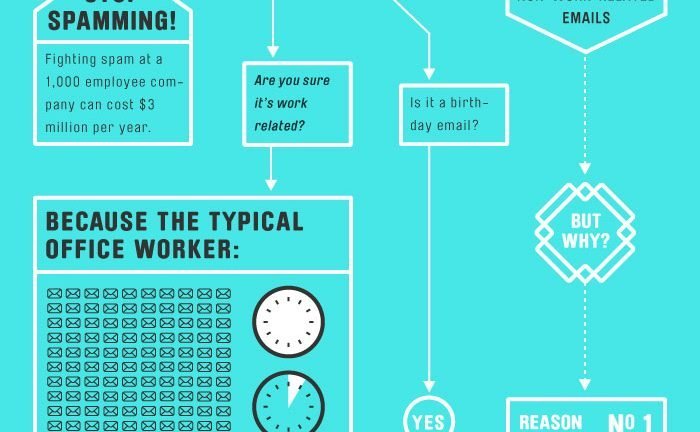As we advance further into the 21st century, managing email overload continuously becomes a higher priority task – especially for business and companies.
Most companies rely on email to foster communication both within and outside of their organization.
When, however, does the use of email become counterproductive to an organization’s success and how can one manage their email correspondences to find the perfect balance between too many emails and not enough emails?
Luckily, an infographic (posted below) was recently published by OnlineITDegree.net that provides both statistics on how prevalent email overload really is and a helpful flow chart that can help you decide when you should and when you shouldn’t send an email.
The email overload statistics are embedded within the flowchart so I’ve extracted the most important facts in the list below.
Email Overload Statistics:
- Managers spend up to 20 hours per week reading emails.
- The average employee receives 200 emails per day.
- Of those 200 emails only 20 are important (36 spam, 144 irrelevant).
- Almost 10% of employers have fired someone for non-work related emails.
- Fighting spam at a 1,000 employee company can cost $3 million / year.
- The typical office workers spends 13 hours a week sending 110 emails per day.
- Businesses lose $650 billion per year due to unnecessary emails.




